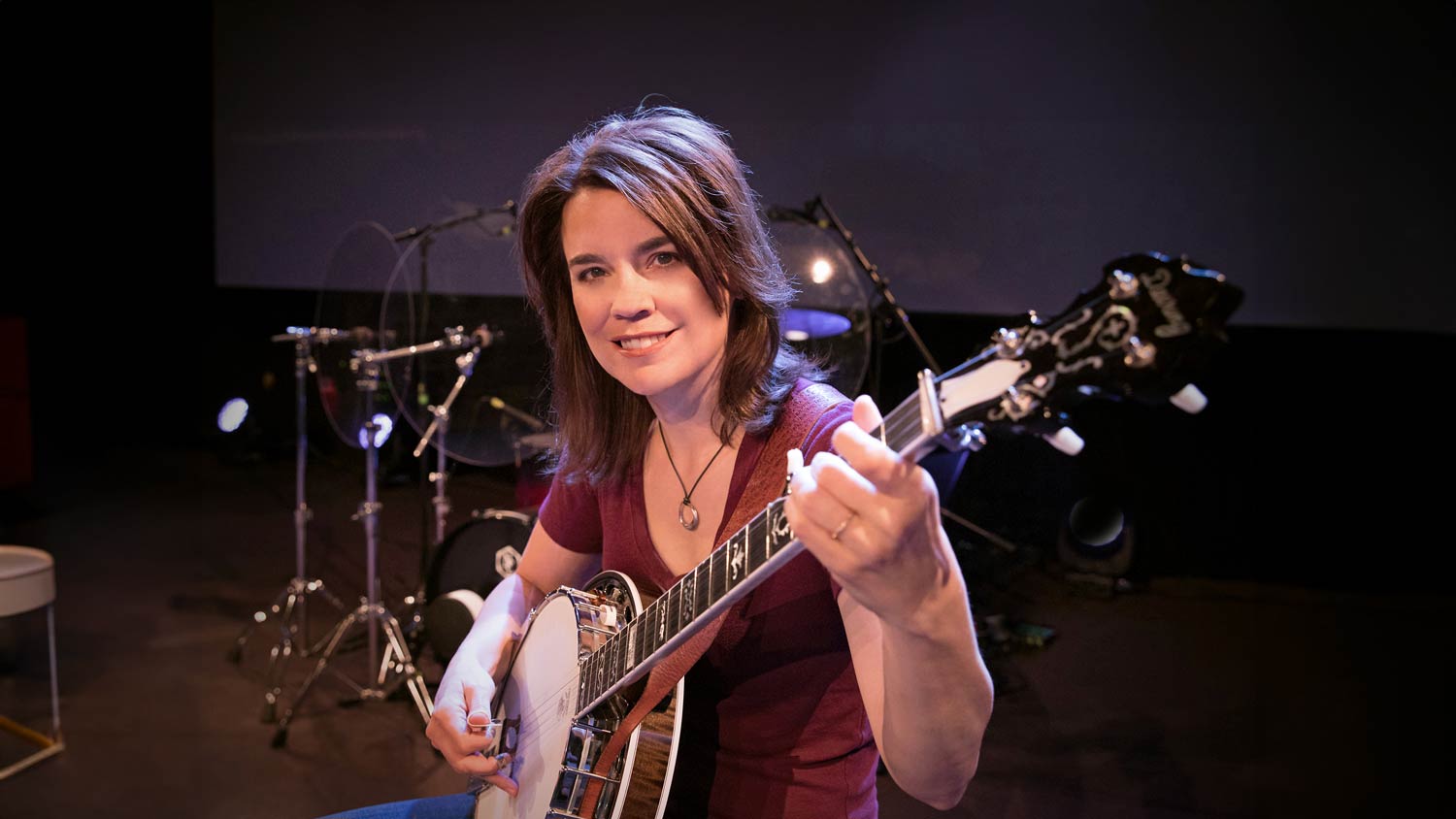Banjo Head Types and Descriptions
Each type of banjo head has a unique contribution to your banjo’s tone. Heads have different effects on different kinds of banjos. For example, one head might sound right for one player on a five string banjo, but be disappointing on another players tenor banjo. A head on a long neck open back banjo might sound completely different on a 12-string banjo. The individual artist's touch on the instrument, the use of picks or bare fingers, the kind of bridge and the gauge of strings are all intertwined in a recipe that creates the musical product that you, the artist, have designed. Music and tone are completely subjective and there is no one answer or definition that can be truly considered final. Here are some brief descriptions that are only meant as guidelines to experimentation.
TOP FROSTED: This is the most popular head made for a five-string resonator banjo. It is crisp, bright with good snap and not too much sustain. The bridge sitting on the hard coating doesn't shift too easily when bumped (or adjusted) and seems to stifle some unwanted sustain that gives fast fingerpicker passages clarity and good note distinction.
BOTTOM FROSTED: This head is very popular with tenor and plectrum banjoists. The smooth top doesn't make noise when fingers are dragged across the surface like many players with flatpicks or plectrums do. The bridge sitting on the smooth surface tends to increase the sustain and reduces some of the bright character of the top frosted head. The head has good bass response (lower frequency as banjos don't have true bass); it sustains more and is sweeter than the top frosted.
FIBERSKYN: A favorite with old time, claw hammer, frailing styles. Also used by some bluegrass players. It is preferred for its warm,round and not as sharp character. It tends to have a more plunky sound. It was intended to approximate the tone of calfskin without the mounting and maintenance work of real skin. It also looks like a calfskin head. (A big plus for re-enactment groups and players wanting a very traditional appearance.)
RENAISSANCE: Another favorite with old time and clawhammer players, the renaissance sits somewhere between a Fiberskyn and a frosted top head on the brightness spectrum. It is much thinner than the Fiberskyn and so it is naturally brighter, but still offers a warm contrast and sustain to the snap of a top frosted head.
CLEAR HEAD: The clear head is good to show inlays, gold plating or other artwork that is done inside the banjo. The tone is sweet with clear distinction and long sustain. It has a bit less bass response than the bottom frosted head. Some say it is brighter.
BLACK HEAD: Strikingly different, this head is very mellow in tone with long sustain, lots of low frequency response (bass) and not as sharp as a clear or bottom-frosted head. More sustain than the fiberskyn and not plunky at all.
PRISM HEAD: Showy appearance and a bit like the black head in tone. Perhaps a little less mellow than the blackhead. A bit brighter and more potential for sharpness. A popular head for tenor and plectrum and Crossfire electric banjos both for tone and appearance. The prism effect radiates lines of color likea real prism when it is moved from side to side. If you want flashy, this is the head for you.
KEVLAR: On a four or five string banjo, the Kevlar tends to sound sharper and emphasizes the high frequencies like you would hear in an archtop tone ring banjo. The head is stiffer and the bridge doesn't sag in the middle and the playability is somewhat like an archtop banjo. The texture of the head is like an orange peel. It is textured but smooth. This head sustains well and is sharp. It is sweet and strong on the six and twelve string banjos.
These descriptions are all based on Deerings current head selection and may not relate to heads from other manufacturers.
Some players find that smooth top heads allow the bridge to slip when slightly bumped. A small bit of rosin rubbed onto the bottoms of the bridge feet will help prevent the bridge from sliding around. The effect on the tone seems insignificant to most players.
















Basically, I think that the responsbility of staff in a caopmny is to help solving problem. There is no absolutly right or wrong but only how to achieve the goal of the caopmny. Never make your boss feel u make him trouble.
Leave a comment